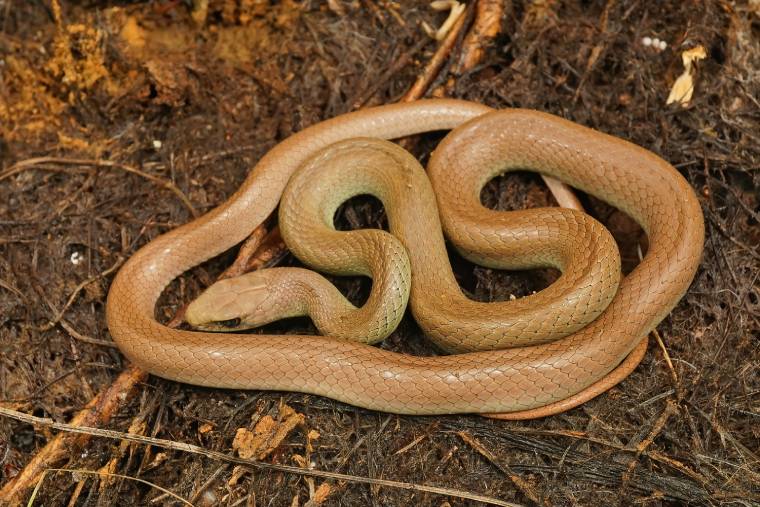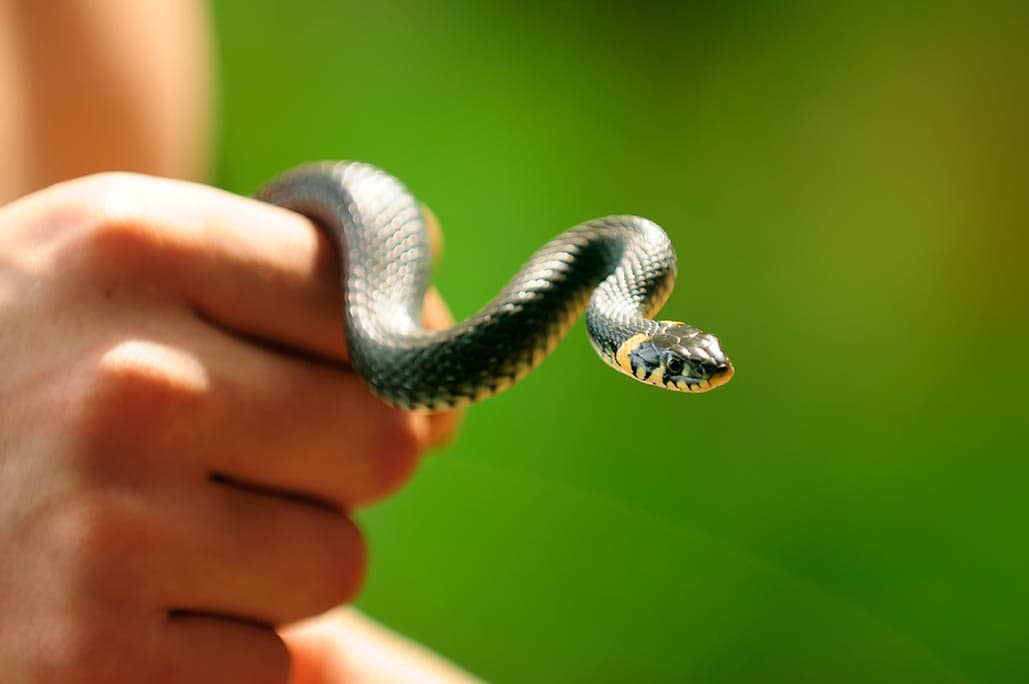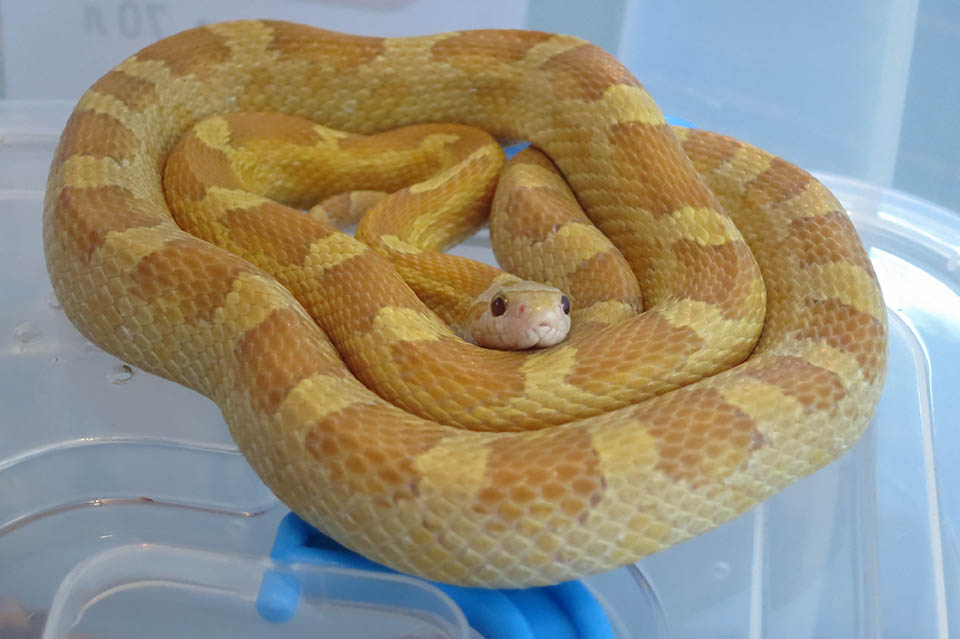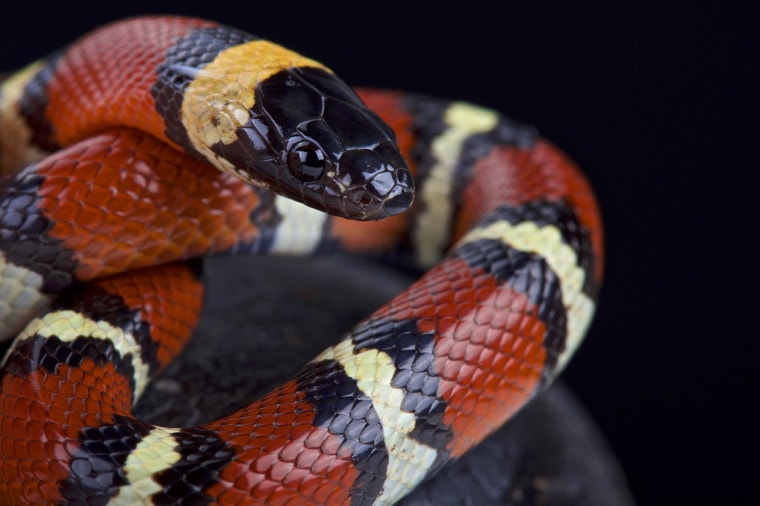
The Mexican milk snake shares similar properties and has almost identical care requirements to the Sinaloan and Nelson’s milk snakes. The biggest difference is in tank size because the Mexican tends to be the smaller of these similar species, and thus needs a smaller habitat. It is not uncommon for owners to find that their Mexican milk snake has been misidentified.
Although it can take time to tame a milk snake for handling, they are relatively docile and may make a suitable pet for first-time snake keepers, with the Mexican milk snake being ideal for those with limited space. Read on for more information on how to care for your Mexican milk snake.
Quick Facts about Mexican Milk Snakes
| Species Name: | Lampropeltis triangulum annulata |
| Common Name: | Mexican Milk Snake |
| Care Level: | Low |
| Lifespan: | 20 years |
| Adult Size: | 30 inches |
| Diet: | Mice, occasionally rats |
| Minimum Tank Size: | 30” x 18” x 18” |
| Temperature & Humidity: | 70° – 90° F, ambient humidity |
Do Mexican Milk Snakes Make Good Pets?
Milk snakes are considered good pets because they are smaller and require a minimally sized tank compared to other exotic snakes. They do not have any specific humidity requirements, and the only real habitat requirement is that of temperature, but even this is easy to manage.
They are non-venomous and will become accustomed to being handled in time. They are vibrant and attractive. They are carnivorous and do eat mice, but this is also easy enough to manage. They can make a good first-time snake and are also suitable for experienced owners.
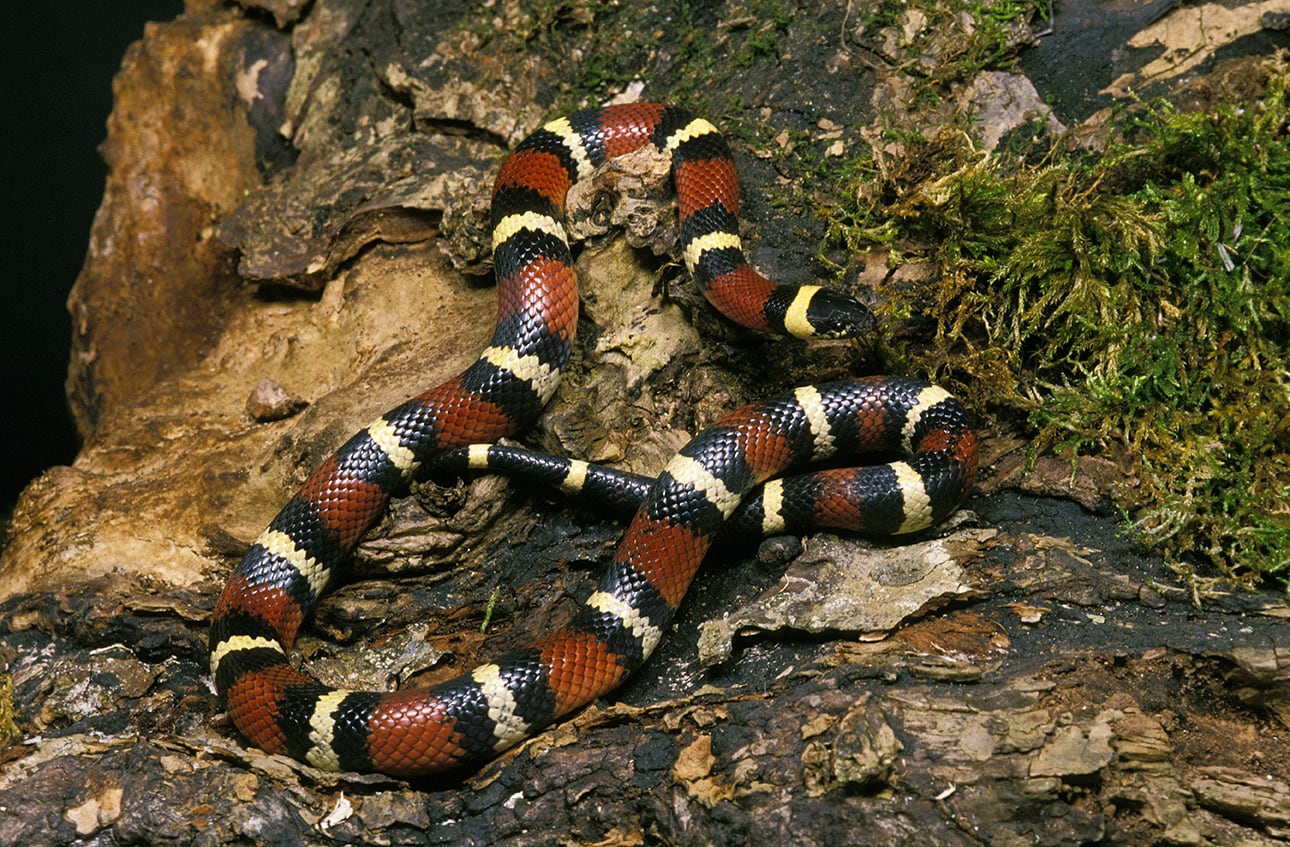
Appearance
Milk snakes are known for their red and yellow, or milk, color. Their bodies usually have thick red bands, which are twice the size of black and milk bands.
The Mexican variant is a little thicker than other milk snakes, but will only grow to a maximum length of 30 inches, or 2.5 feet, with the majority only achieving a length of 1.5 feet. The females are usually a little larger than the males, as is common with snakes.
How to Take Care of Mexican Milk Snakes
Considered a reasonable choice for novice keepers, the Mexican milk snake has low to moderate care requirements. You will need to provide the following habitat and conditions for your pet.
Habitat, Tank Conditions & Setup
Tank
Although it may be possible to keep one in a smaller tank, you should provide a 20-gallon tank for adult Mexican king snakes. This is smaller than is recommended for most other species because the Mexican is a smaller snake. However, the more space you can provide, the more the snake will thrive.
Although large glass tanks are available, wooden tanks are preferred because they retain heat better.
Provide hiding spots, using items like upturned coconut shells or half logs. Flowerpots may also be suitable, and it is possible to buy commercial hides made from rock and other materials. Add rocks and branches to give a more natural-looking décor.
You should spot clean the tank every day. This means removing feces and other dirt. You will also need to give the tank a full clean every 4-6 weeks, which involves removing all items and cleaning these and the tank before replacing them.
Lighting
Milk snakes are nocturnal and if house lighting is on in the evening and the tank is in daylight during the day, it isn’t strictly necessary to have lighting in the tank. Putting a simple LED light in the cage can improve your snake’s habitat, though, and make it easier for them to distinguish between day and night.
Heating
As with all reptiles, it is a good idea to implement a heat gradient across the tank. With the milk snake, the cooler end of the tank should be around 70° F with the hotter end, or the basking area, at approximately 85° F. Temperatures should not exceed 90° F.
The milk snake does not have any specific humidity requirements, although you should ensure that humidity is not allowed to rise too much.
Substrate
Aspen is a popular substrate for this species. Alternatively, you can create your own mix of potting soil and sand.
| Tank Recommendations | |
| Tank Type: | 20-gallon wooden vivarium |
| Lighting: | None required |
| Heating: | Heat mat or ceramic bulb |
| Best Substrate: | Aspen |
Feeding Your Mexican Milk Snake
The Mexican milk snake is actually an easy snake to feed. They do eat mice, and some bigger milk snakes may occasionally eat rats, but other than dusting the mice before feeding, little else is required. Young Mexican milk snakes will eat pinkies to hoppers. Adults will eat adult mice. This species rarely reaches a large enough size to eat rats. Ensure that the mice are dusted with a calcium supplement when feeding young snakes and expect to feed once or twice a week.
| Diet Summary | |
| Fruits: | 0% of diet |
| Insects: | 0% of diet |
| Meat: | 100% of diet – small/medium-sized mice |
| Supplements Required: | Calcium dusting for young snakes |
Keeping Your Mexican Milk Snake Healthy
The Mexican milk snake is considered a hardy breed that will survive well in under human care, but there are some conditions that this small milk snake species is prone to.
Common Health Issues
Lifespan
Expect a milk snake to live at least 12 years, and up to a maximum of 20 years, under human care.
Breeding
Mexican milk snakes should usually be kept separately and the only time they should be kept together is if you want to breed them.
The female needs to be fully mature and both need to be free of genetic illnesses and conditions.
This species will breed freely if kept together, and you shouldn’t need to do anything special other than put them in the same tank.
Provide a nesting box and use a material like moss to keep the box humid and damp. Incubate the eggs at 84º F. It will take approximately 2 months for the eggs to start hatching and once the first baby breaks free, this will encourage the others to follow suit.
Are Mexican Milk Snakes Friendly? Our Handling Advice
The milk snake can be a little nervous and skittish as a baby. They may try and scare you off if they perceive you as a threat, but they are very unlikely to bite.
When you first get a Mexican milk snake, allow it 1-2 weeks to settle into its new surroundings before handling it.
Ensure that you do not hold the snake too high off the ground because they are more active than some other species when handled.
Shedding & Brumation: What to Expect
The milk snake sheds as it grows and outgrows its existing skin, therefore it happens more frequently in babies than adults. Young snakes might shed every month, while adults will only shed approximately every 3 months.
Although they brumate naturally in the wild, milk snakes do not need to brumate when kept as pets, unless you want them to. This may be encouraged before breeding.
How Much Do Mexican Milk Snakes Cost?
Mexican milk snakes are small and make popular pet snakes, with experienced and novice handlers. They also breed easily. This combination means that the milk snake is inexpensive, typically costing between $100 and $200 for a young snake.
Care Guide Summary
Final Thoughts
The Mexican milk snake is one of the dozens of varieties of milk snake, and one of three very similar species. It is the smallest of these related species, however, typically only growing to a length of 30 inches. They are docile as adults, easy to handle, and they only require a relatively small vivarium to be comfortable. Popular as pets with experienced and novice handlers, these little snakes are attractive and fun to keep.
Related Reads:
- Black Milk Snake: Facts, Info, Pictures & Care Guide
- Sinaloan Milk Snake: Facts, Appearance & Care Guide (with Pictures)
Featured Image Credit: eptiles4all, Shutterstock






